-
JVCalhoun

- Posts: 3
- Joined: Thu Oct 31, 2024 1:58 am
Re: Papilio bjorkae (Pavulaan, 2024) Tiger Swallowtail
by JVCalhoun » Sun Nov 10, 2024 4:59 pm
As for studying butterflies in Florida, this can be a bit challenging. I don't mean to sound pessimistic, but given the state's growing population and rapid development, the best habitats are now restricted to county parks, state parks, state wildlife management areas, state forests, and national forests. Legitimately collecting specimens requires permits in these areas. Years ago, permits were not really required on state lands, but now local personnel will stop and inquire if they see someone walking around with a net. Other folks visiting those areas will sometimes do the same. South Florida is really tough, as good sites outside protected lands are few and far between. Vacant lots and roadsides can still be productive, especially in northern Florida. It may take some getting used to, but hopefully you will find something of interest to study!
Just a word of warning from someone who's lived in Florida for 35 years: don't live too close to the coast, and stay out of flood zones. You should see how much damage was caused around Tampa Bay this year by Hurricane Milton, and it wasn't even as devastating as it could have been.
-
KKarns
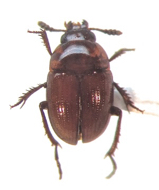
- Posts: 35
- Joined: Mon May 23, 2022 8:07 pm
Re: Collecting moths in places not near home - how to bring equipment?
by KKarns » Sun Nov 10, 2024 4:29 pm
-
kevinkk

- Premium Member - 2024

- Posts: 433
- Joined: Mon May 23, 2022 5:06 pm
Re: Does Papilio rutulus have a spring form? And more...
by kevinkk » Sat Nov 09, 2024 7:28 pm
Interesting, I had to look at the book for the normal differences. Apparently wider bandwith is the normal typical difference besides color between eurymedon and rutulus. Now that I see it, it could be a tough call with the obvious amount of variation. Except for the color, and slightlyPapilio_indra wrote: ↑Sat Nov 09, 2024 6:11 pm right corner of the last photo could be P. eurymedon or a hybrid between the two
wider bands on the wings, the respective species look a lot alike. I see the hooking as well, most likely more variation.
-
Papilio_indra

- Posts: 35
- Joined: Thu May 26, 2022 3:03 pm
Re: Does Papilio rutulus have a spring form? And more...
by Papilio_indra » Sat Nov 09, 2024 6:11 pm
- Attachments
-
- rutulus3.jpg (98.55 KiB) Viewed 38 times
-
- rutulus2.jpg (99.75 KiB) Viewed 38 times
-
- rutulus1.jpg (102.58 KiB) Viewed 38 times
-
MikeH

- Posts: 74
- Joined: Sun Jun 12, 2022 11:37 pm
Re: Does Papilio rutulus have a spring form? And more...
by MikeH » Sat Nov 09, 2024 5:15 pm
One more separated population of rutulus is the sky islands in SE Arizona. The black hills is also an interesting location where canadensis, rutulus and glancus all come together.
-
Chuck

- Premium Member - 2024

- Posts: 1157
- Joined: Mon May 23, 2022 2:30 pm
Re: Papilio bjorkae (Pavulaan, 2024) Tiger Swallowtail
by Chuck » Sat Nov 09, 2024 4:47 pm
John, my NE Tiger Swallowtail field work is coming to a close; we're moving to FL. I don't know beans about what there is to research in FL. I probably should start a different thread on this, but hope I can get some guidance on where to start.
-
JVCalhoun

- Posts: 3
- Joined: Thu Oct 31, 2024 1:58 am
Re: Papilio bjorkae (Pavulaan, 2024) Tiger Swallowtail
by JVCalhoun » Sat Nov 09, 2024 3:12 pm
I now get what you're saying. In other words, if the addendum did not state that the name was new, then the addition of the information about the location of the holotype would still not validate the name. The addendum technically serves as the "description," as it satisfies the Code and refers to the first paper where the taxon is defined.
John
-
adamcotton

- Global Moderators

- Posts: 909
- Joined: Tue Mar 22, 2022 12:24 pm
Re: Papilio bjorkae (Pavulaan, 2024) Tiger Swallowtail
by adamcotton » Sat Nov 09, 2024 2:47 pm
Good to see you contributing here; sorry if you were confused by my posts. Indeed, the original description stated that the name was 'new'. I was just pointing out that the Addendum only mentioned 'new' in the subject line, rather than in the text of that publication. I was, possibly not very clearly, pointing out that if that word had been omitted completely the Addendum would have failed article 16.1.
This may seem overly fussy to many readers, but historically the various editions of the Code were drawn up meticulously in order to avoid repetition of serious problems that had occurred previously. It is in that context that readers should understand why certain aspects of the Code appear rather 'fussy' and highly legalistic.
The next edition of the Code will apparently be very different in approach. I understand that much more emphasis will be placed on registration rather than publication of the description conferring availability of a new taxon, which should avoid a lot of these sorts of issues in future. That does not mean that a description will not be needed. Currently I do not have much information about the contents of the new Code edition, but the draft will be made available for public consultation for a year before the final version is drawn up and it is actually published.
Adam.
-
JVCalhoun

- Posts: 3
- Joined: Thu Oct 31, 2024 1:58 am
Re: Papilio bjorkae (Pavulaan, 2024) Tiger Swallowtail
by JVCalhoun » Sat Nov 09, 2024 2:18 pm
Adam noted is that the name only became a validly published available name after Harry issued the addendum on 2 November, because the location of the holotype was not stated, and the name was not explicitly indicated as intentionally new. Although I agree that the location of the holotype was omitted (Art. 16.4.2), I'm a little confused about the perceived lack of any mention that the name is "new."
It is clearly stated several times in the paper that bjorkae is a new name, including directly under the proposed name as "(new species)." It is even given in the title: "Determination of a new spring-flying species of the Pterourus glaucus complex (Papilionidae) in southern New England." This seems to be enough to satisfy Art. 16.1.
Maybe I am misinterpreting Adam's comment.
John
-
kevinkk

- Premium Member - 2024

- Posts: 433
- Joined: Mon May 23, 2022 5:06 pm
Re: Coelocnemis dilaticollis longevity
by kevinkk » Sat Nov 09, 2024 2:54 am
At first when I started putting in the fruit, I saw the beetle feed every night at length, I almost expected the sudden nutrition to kill it, change isn't
always good, but it's still going, close to 29 months in captivity. I'm really going to miss this critter when it expires, a good reason to get back to Lost Lake.
-
mswisher

- Posts: 4
- Joined: Mon May 23, 2022 5:01 pm
Re: Collecting moths in places not near home - how to bring equipment?
by mswisher » Fri Nov 08, 2024 10:31 pm
-
58chevy

- Posts: 461
- Joined: Mon May 23, 2022 5:58 pm
Re: some assembly required
by 58chevy » Fri Nov 08, 2024 5:03 pm
-
58chevy

- Posts: 461
- Joined: Mon May 23, 2022 5:58 pm
Re: Does Papilio rutulus have a spring form? And more...
by 58chevy » Fri Nov 08, 2024 4:46 pm
-
Chuck

- Premium Member - 2024

- Posts: 1157
- Joined: Mon May 23, 2022 2:30 pm
Re: Tiger Swallowtails of NY: Finger Lakes, Part II
by Chuck » Fri Nov 08, 2024 2:18 pm
I make no inference that any of these hold taxonomic status, or are forms, or whatever. I refer to each as a "morph" for lack of better standing.
What I don't depict, but may add later, is the June morph/ flight that used to be common in the 1970s and 1980s.
THIS IS WORK IN PROGRESS. Saved so if there's a hiccup I don't lose everything.
#1. I thought this was canadensis until Eurytides said "no it's not" and I took a closer look. Previous images of this specimen used in the seasonal reports for NYS reference this specimen as canadensis, which I now know is wrong.
DESCRIPTION: Very small, very hairy. Has the big "mohawk" like canadensis. Longer tails than canadensis. HW lunules more like glaucus. Claspers are yellow-brown, not mottled like canadensis.
OCCURANCE: Mid-may, first flying morph. This morph occurs along the SE shore of Lake Ontario, which is very cold in Spring. Somewhere as one wraps east then north around Lake Ontario this morph it runs into, and then is replaced by, canadensis. Not common, very difficult to capture; never observed nectaring but rather a ground-feeder.
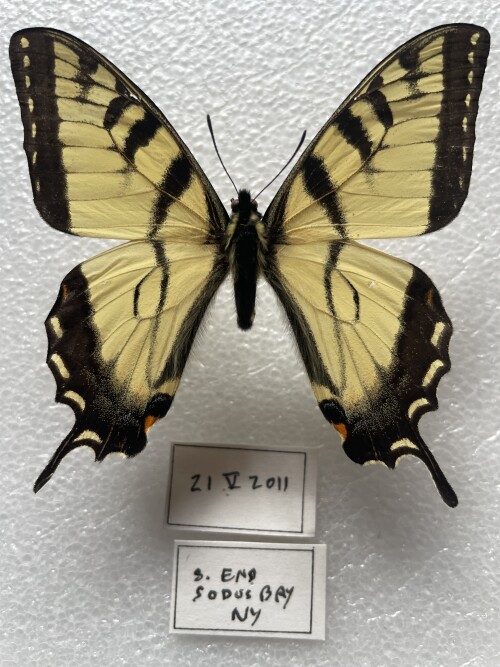
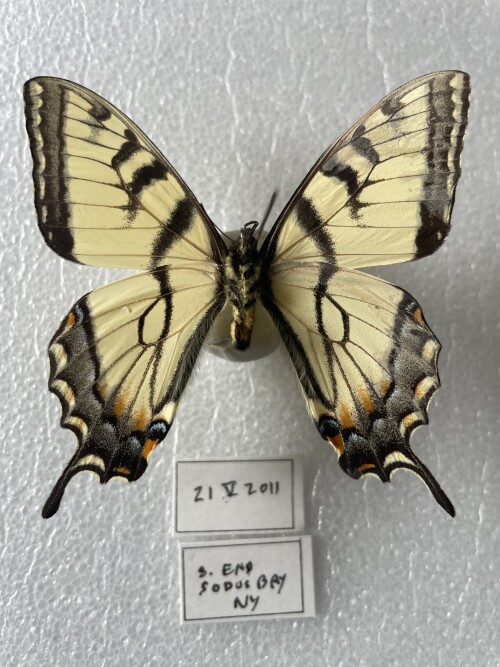
#2. Rather common in late May in the hilly regions of Finger Lakes. Still a bugger to catch.
DESCRIPTION: Mid-sized between canadensis and MST. Universally pale yellow upper side; little variation in individuals.
OCCURANCE: Mid- to late-May. If timing is right, it can be found nectaring on Lilac. Hilly regions, including towns, below US Routes 5 & 20, particularly along the shorelines of the Finger Lakes themselves. A forest flyer, often seen battling near forest edge. Comes low only to nectar or ground feed.
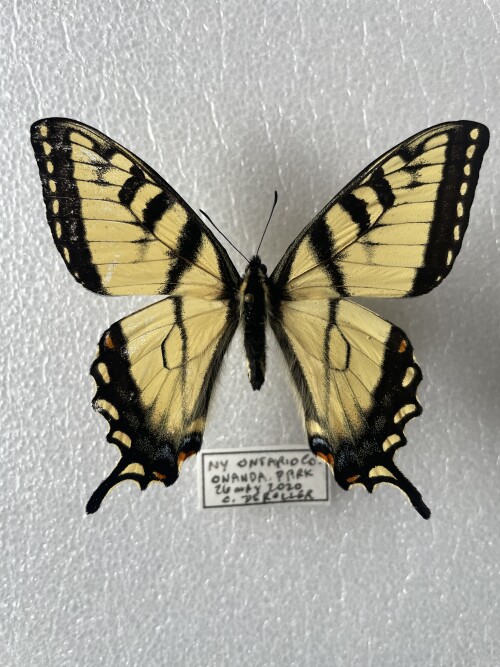
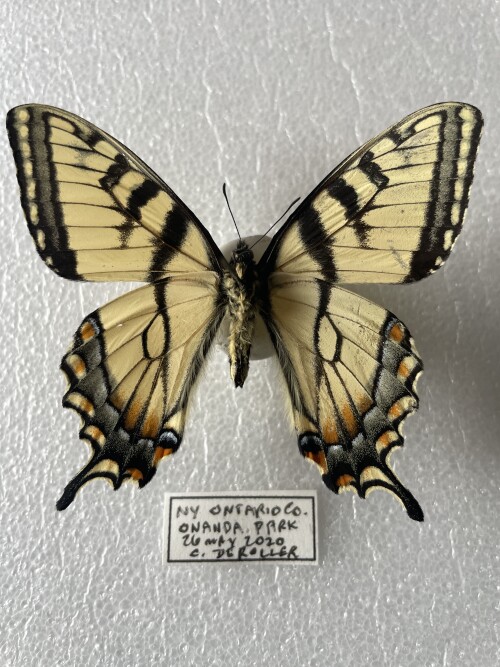
#3. Same size as MST, larger than #2 above. It's hard from photos, but in real life they appear different and act differently than #2. Discernability from MST is questionable.
DESCRIPTION: Like #2 above, but yellow upper side is more orangish. Larger than #2, about the same size as MST.
OCCURANCE: Late May- ??. Likes to hilltop. Flies on forest canopy whether that's 80' oaks or short scrub. Quite commonly seen when temperature above 65F and sunny, likes to fight. Will alight on sun-drenched trees that are not the foodplant, with multiple individuals on one tree; when frightened will return. Still a bugger to catch.

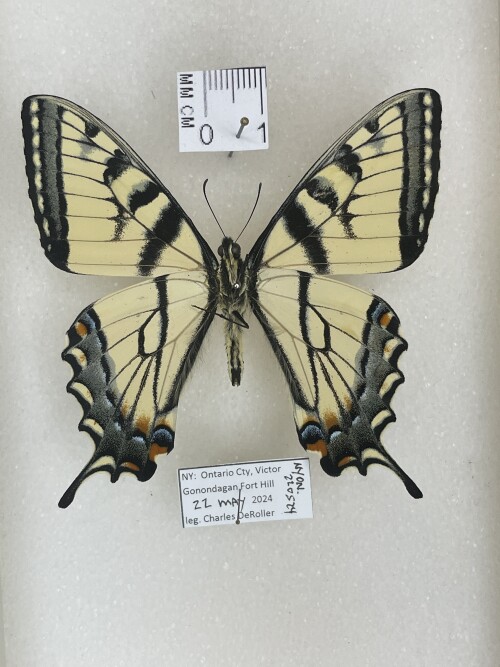
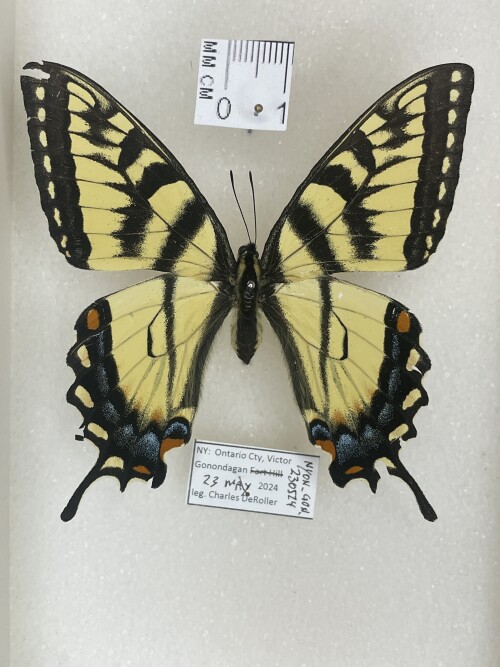
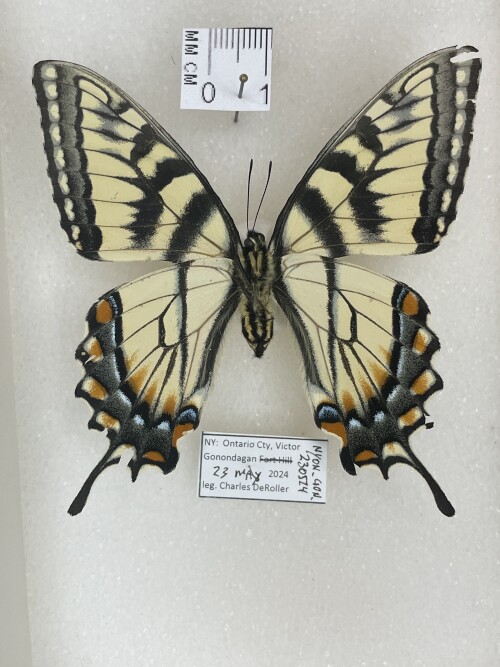
#4. Now, this is where things get dicey. Up in eastern Ontario Canada, where Eurytides studies, an area where Tigers including MST have been very well documented, it's easy- a flight of canadensis, then a flight of MST with virtually no overlap. As one can see so far, from mid-May (14 May to be exact, never earlier, but maybe a few days later if 14 May is rainy) through (below) June there are Tigers...which rolls straight into the ~01 July MST emergence. And, as you will note in specimen #4 below, it becomes very difficult to discriminate between these June Tigers and MST based on morphology alone. This specimen was ovipositing on apple, not a recognized larval food plant.
DESCRIPTION: I can't tell from MST; within morphology of MST. Same size as MST.
OCCURRANCE: Not common; far less frequent than #2 / #3 above. Some years I've seen zero in June. Explain that.
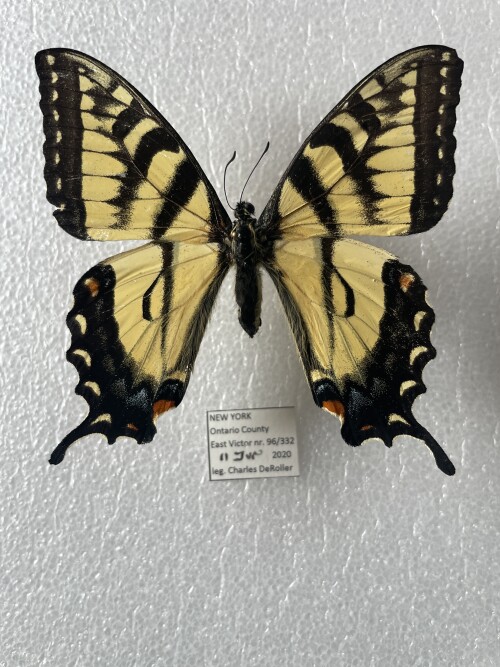

VIRGINIA
The following are Spring Form "glaucus" from the Appalachian Mountains of Virginia. Constrast these to Pavulaan's Spring Form confirmed "glaucus" Figures 12-17 from Rhode Island. These from Virginia don't look very glaucus-y or like Pavualaan's. More later.
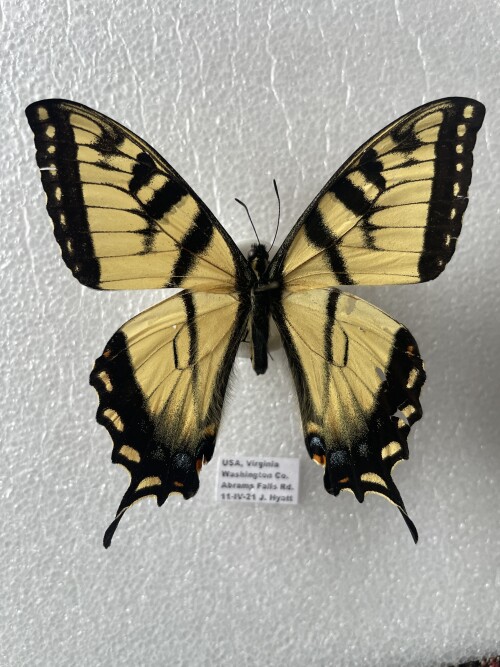
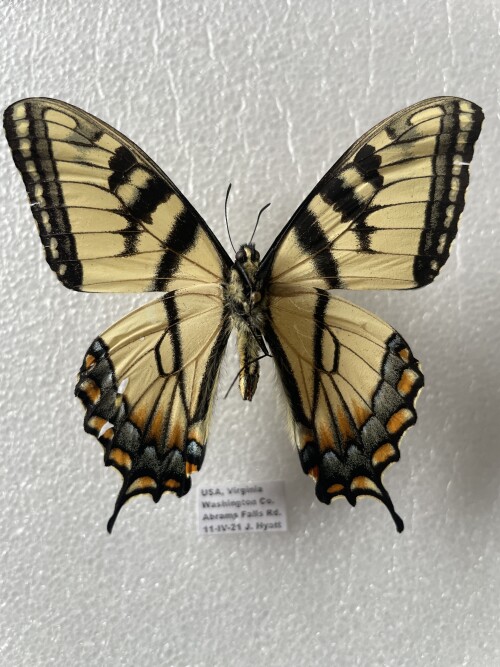
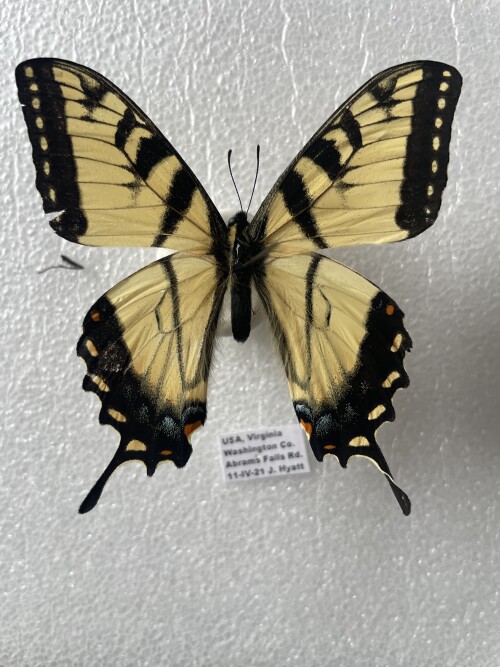

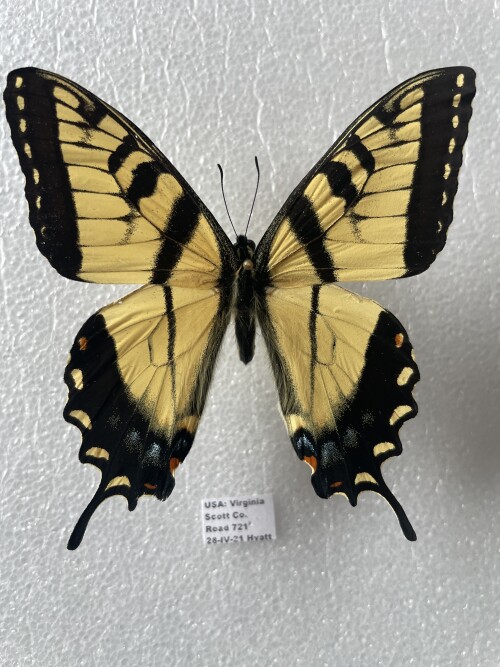

-
Chuck

- Premium Member - 2024

- Posts: 1157
- Joined: Mon May 23, 2022 2:30 pm
Re: Tiger Swallowtails of NY: Finger Lakes, Part II
by Chuck » Fri Nov 08, 2024 1:06 pm
Anyway, check this out, I call it "Lycaenid-like"; beyond the size, note the rounded wings and lack of HW scalloping.
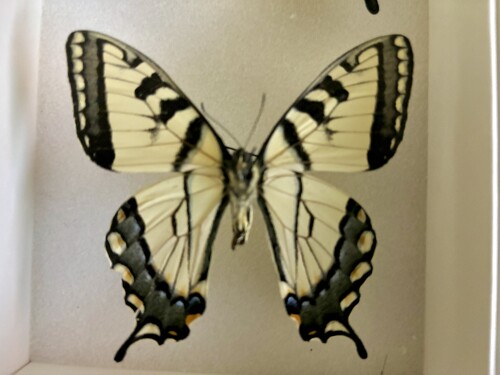
-
Jshuey
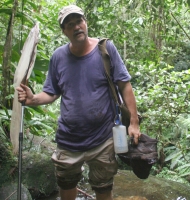
- Global Moderators

- Posts: 189
- Joined: Tue Mar 22, 2022 2:27 pm
Re: some assembly required
by Jshuey » Fri Nov 08, 2024 12:46 pm
I don't know what is in this but I do know that it is similar to model aircraft "dope" - which is a paint that has a very unique smell. If you have ever used this stuff - you know. I just Googled it and the thinner is butyrate, whatever that is. You can find it in hobby shops or on line. I tried buying clear dope once - but it did not adhere very well to insect cuticle.biscuit153 wrote: ↑Thu Nov 07, 2024 4:06 am Beautiful work.
Bioquip adhesive is great. I've worried about where I might get it in the future. Does anyone have any idea what this adhesive is or where it can be sourced?
john
-
Chuck

- Premium Member - 2024

- Posts: 1157
- Joined: Mon May 23, 2022 2:30 pm
Re: Does Papilio rutulus have a spring form? And more...
by Chuck » Fri Nov 08, 2024 12:29 pm
Last night I decided to tackle both the Drawer From Hell ("canadensis") and Spring Forms, and clean that mess.
Two specimens from May from Jefferson and Boulder counties CO were labeled "canadensis", and are quite small, but there are no canadensis reported from CO. Thus the reason for that question. These are what I'd call Spring Form, looking more-canadensis than summer rutulus, but I guess they provisionally go into the rutulus drawer. Let someone else figure it out.
And in moving some of the clearly-not-canadensis, a couple specimens went into the rutulus drawer where I re-noticed that a couple specimens from CA (not same location) have very hooked FWs.
-
adamcotton

- Global Moderators

- Posts: 909
- Joined: Tue Mar 22, 2022 12:24 pm
Re: Does Papilio rutulus have a spring form? And more...
by adamcotton » Fri Nov 08, 2024 10:21 am
Of course it is possible that there could be unrecognised taxa in what is currently treated as Papilio or Pterourus rutulus.
Adam.
-
adamcotton

- Global Moderators

- Posts: 909
- Joined: Tue Mar 22, 2022 12:24 pm
Re: Papilio bjorkae (Pavulaan, 2024) Tiger Swallowtail
by adamcotton » Fri Nov 08, 2024 9:21 am
Bear in mind also that the Code has to cover the myriad of different organisms in Zoology, some of which may for whatever reason be difficult to illustrate or photograph.
Adam.
-
eurytides

- Posts: 225
- Joined: Tue May 24, 2022 1:36 am
Re: Papilio bjorkae (Pavulaan, 2024) Tiger Swallowtail
by eurytides » Fri Nov 08, 2024 5:45 am
